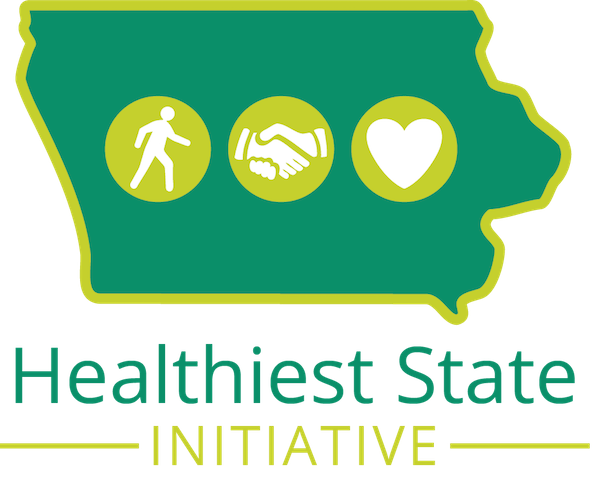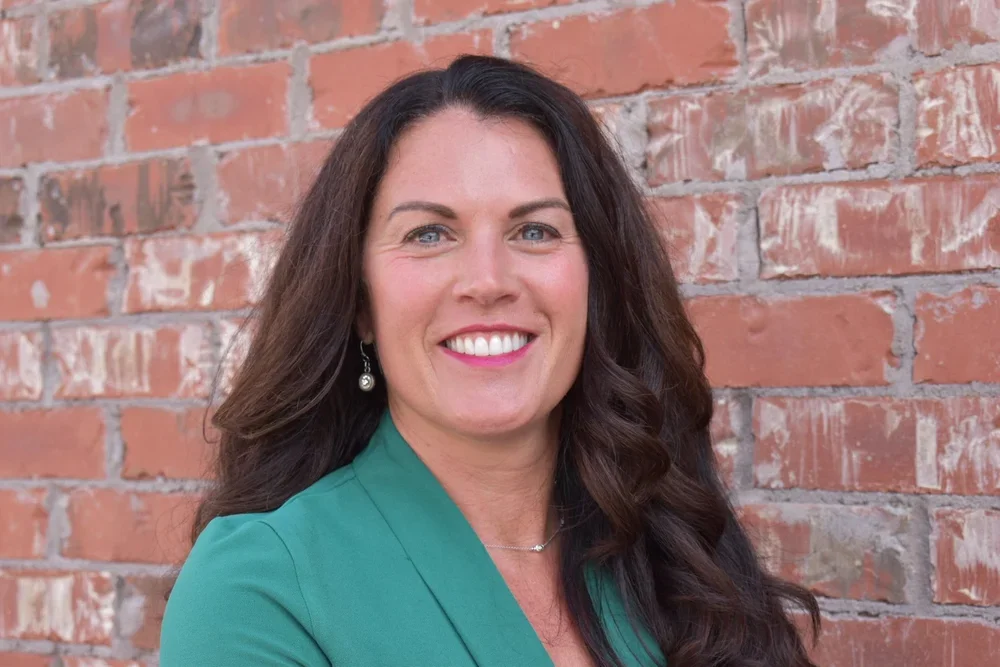Cancer with the Iowa Cancer Consortium - Healthiest State Month Week 4
Iowa Healthiest State Initiative Executive Director, Jami Haberl
Cancer is a major health concern in Iowa, and for good reason. More than 1 in 20 Iowans have been diagnosed with cancer at some point in their lives. While cancer rates are dropping in many parts of the country, Iowa is one of just two states where the overall age-adjusted cancer incidence rate is rising. In fact, Iowa now ranks 2nd highest in the nation for the rate of new cancer cases, just behind Kentucky.
This troubling trend sparked action, with Governor Reynolds signing SF 647 for $1 million to the University of Iowa College of Public Health to explore potential causes of Iowa’s high cancer rate. So, what’s behind the troubling trend – and how can we turn things around to match progress seen in other states? The answer isn’t simple, but it starts with understanding the everyday habits, policy landscapes, and environmental risks that may contribute to Iowa’s high cancer rates.
Let’s take a closer look at the four types of cancer that appear to be driving Iowa’s high cancer incidence rate. According to the Iowa Cancer Registry:
Lung cancer: Iowa ranks near the bottom nationally in reducing lung cancer rates, yet lung cancer can be largely prevented. Tobacco use causes over 80% of lung cancer cases, and radon – a naturally occurring gas found in many Iowa homes – is the second leading cause behind tobacco.
Melanoma: Iowa has the 2nd highest rate of melanoma in the country. The main causes are exposure to ultraviolet light from the sun and indoor tanning beds.
Breast cancer: Iowa ranks 13th nationally in new cases of breast cancer. Three risk factors for breast cancer include drinking alcohol, excess body weight after menopause, and lack of physical activity. (source)
Prostate cancer: Rates are rising faster in Iowa than in many other states. Iowa ranks 4th highest among Black males and 7th highest among White males. Risk factors include age, race/ethnicity, and family history. (source)
In addition to these four cancers, Iowa also ranks #7 in colorectal cancer, though our trends are similar to the countries as a whole. We also rank number 1 in the country for oral cavity and pharynx cancer, which are associated with HPV. This cancer is highly preventable!
The risk factors for these four cancers vary, and they follow different geographic patterns across the state, indicating there is not one single cause for Iowa’s elevated cancer rate. Thankfully, there is still a lot we know about how to reduce our own risks of cancer and reduce cancer in Iowa, including those outlined in our other Healthiest State Month blogs on nutrition and physical activity.
Iowa Cancer Consortium Executive Director, Kelly Wells Sittig
Cancer is unbelievably complex and is the result of many different factors, including genetics, behavior, and the environment. There is no one thing that can prevent cancer from occurring. While we can’t change risk factors like age or genetics, there is still a lot we can do to reduce our cancer risk. And while there are changes that some individuals can make to reduce their personal risk of cancer, policy change at all levels has the potential for the biggest impact.
The Iowa Cancer Plan offers a blueprint for addressing cancer in the state and includes priorities to address major risk factors.
Tobacco and nicotine use: A recent study suggests Iowa will have the highest prevalence of cigarette smoking out of all states by 2035. (Stone et al, 2025) Reducing tobacco and nicotine use, especially among young people, could have a massive impact on lung cancer rates in Iowa. The Iowa Cancer Plan includes calls for effective tobacco prevention policies and treatment for those attempting to quit. This includes reducing the number of first-time users especially among youth and young adults, strengthening clean air laws, increasing the tobacco tax, and increasing access to nicotine addiction treatment.
Radon: Seven out of ten 10 homes have elevated radon levels in Iowa. Every home in Iowa should be tested for radon, and if high levels are found the problem should be mitigated. Thankfully, testing for radon is easy. Low-cost radon tests are available online at the Radon in Iowa website or through Iowa’s Radon Hotline (1-800-383-5992). It’s also easy to fix an indoor radon problem, though this usually costs the same as the purchase of a new large appliance or a small home project. Potential systems change that can help reduce radon-related lung cancer include financial support for mitigation, building homes with radon-reducing methods, and increasing awareness about radon’s link to cancer.
Drinking Alcohol: Drinking any amount of alcohol increases a person’s risk of cancer. Binge drinking poses the biggest risk. Iowa has the 4th highest incidence of alcohol-related cancers. Every Iowan should be aware of the risk of alcohol use and make informed choices to reduce the related cancer risk. On a policy level, the Iowa Cancer Plan proposes increasing alcohol taxes and limiting alcohol availability in public spaces.
Nutrition and Low Physical Activity: The connection between nutrition and physical activity and cancer is well documented. In fact, the American Cancer Society reports that “the combined effects of having excess body weight, drinking alcohol, physical inactivity, and having a poor diet are responsible for about 19% of cancer cases” (source). Moving more, sitting less, and eating a healthy diet can help reduce an individual’s own cancer risk. But individual choices alone are not enough. We must also create environments in the state that make healthy choices easy and more accessible. That means removing local barriers to physical activity, supporting communities facing health inequities, and educating leaders about food insecurity and its impact on health. Programs like the Iowa Healthiest State Initiative’s Double Up Food Bucks, Produce Prescriptions and 5-2-1-0 Healthy Choices Count! are already helping Iowans access nutritious food and build lifelong healthy habits. System level changes that improve the quality of the water we drink and the food we eat can create a healthier future for all.
UV Radiation: Iowa has the 2nd highest rate of melanoma in the country. The main cause of melanoma is the use of indoor tanning beds and exposure to the sun’s ultraviolet light. We need to increase opportunities for sun protection outdoors, increase awareness about skin cancer prevention, decrease indoor tanning use, especially among young people and implement sun safety programs in schools, worksites and communities. HPV vaccination: The human papillomavirus, or HPV, can cause six different types of cancer, including cervical, anal, oral and pharynx, vulvar, and penile cancers. Vaccinating children for HPV between the ages of 9 and 12 provides the best protection against HPV-related cancers, and the vaccine is safe, effective and long-lasting. Individuals can ensure the young people in their lives are vaccinated, and policies can support access to the vaccine and effective education and messaging.
The relationship between other environmental exposures and cancer is also very important to Iowans right now, as it should be. Though the connections between cancer and exposures to chemicals, such as nitrates and pesticides, are much more difficult to study, caution is warranted. For example, we know that the International Agency for Research on Cancer (IARC) classifies nitrate in food and water as “probably carcinogenic” to humans. And though the NIH’s robust Agricultural Health Study has shown that Iowa farmers—a group expected to have increased exposure to pesticides and animals--have an overall reduced risk of cancer compared to the general population, it’s worth noting that they have increased risk of some cancers including prostate, thyroid, testicular, and some blood cancers. It makes sense to include policies and practices related to these exposures in a comprehensive effort to reduce Iowa’s cancer rates, even though the potential impact is less known than with the risk factors above.
All Iowans, individuals, health care providers, public health professionals, advocates, policy makers, can use the Iowa Cancer Plan to find evidence-based strategies and actions to help reduce cancer risk individually or on a larger scale.
Initiatives like the 99 Counties Project provide county-specific cancer data to help communities take action. Iowans can stay informed and get involved by subscribing to the Iowa Cancer Consortium’s monthly newsletter or by becoming a member.
Because cancer is so complex, and because it can take decades to see the results of important prevention work, we know this challenge won’t be solved overnight. Changing individual habits takes time and is only part of the solution. To truly make progress, we must also adopt policies that shape healthier environments and influence the choices Iowans make every day. When communities have access to nutritious food, safe places to be active, and protection from harmful exposures, healthier behaviors become easier and more sustainable. The good news is: change is possible. With personal commitment and policy action working hand in hand, we can build a healthier Iowa for everyone.
While more Iowans than ever are being diagnosed with cancer, more are surviving it too. With a comprehensive approach and by investing in prevention, early detection, research, and survivor care, we can create a future where cancer is no longer a burden in Iowa.
Spread the Word: Download these graphics for free and share them on social media with #HeyIowa and #HealthiestStateMonth!
Support the Iowa Healthiest State Initiative: The Iowa Healthiest State Initiative is a nonprofit, not a government agency, our work is made possible by the support of Iowans like you! Consider making a donation to help continue our work across the state!








